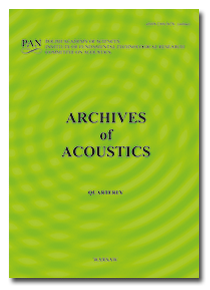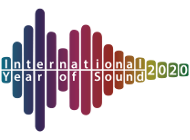Archives of Acoustics,
9, 1-2, pp. 143-154, 1984
Properties of holographically produced complex spatial filters for real-time deconvolution of blurred ultrasound images
All ultrasound pulse-echo imaging systems suffer from limitations of both lateral and axial resolution due to beam-width and pulse-length respectively. Therefore a point-target will always be depicted as a blurred dot.
In essence only deconvolution of the system's impulse-response (or smear-function or blurring) could provide further improvement. Earlier an optical system was described potentially capable to process the echo-signals as received by a phased-array pulse-echo system in real-time and in two dimensions.
A holographic method can be used to produce a complex spatial filter for a particular reference-target which performs to some extent inverse filtering or deconvolution.
Both model-evaluations and experiments were carried out, showing a reasonable agreement.
With the used amplitude transmission-characteristic of the photographic emulsion complex spatial filters can be produced showing inverse-filter properties For only a small dynamic range.
Further work should be devoted to increasing the filter's dynamic range and dynamic range compression methods prior to the filtering.
In essence only deconvolution of the system's impulse-response (or smear-function or blurring) could provide further improvement. Earlier an optical system was described potentially capable to process the echo-signals as received by a phased-array pulse-echo system in real-time and in two dimensions.
A holographic method can be used to produce a complex spatial filter for a particular reference-target which performs to some extent inverse filtering or deconvolution.
Both model-evaluations and experiments were carried out, showing a reasonable agreement.
With the used amplitude transmission-characteristic of the photographic emulsion complex spatial filters can be produced showing inverse-filter properties For only a small dynamic range.
Further work should be devoted to increasing the filter's dynamic range and dynamic range compression methods prior to the filtering.
Full Text:
PDF
Copyright © Polish Academy of Sciences & Institute of Fundamental Technological Research (IPPT PAN).
References
A. VANDER LUGT, Signal detection by complex spatial filtering, IEEE Trans. On Information Theory, IT-10, 139 (1964).
J. C. SOMER, Real-time improvement of both lateral and range resolution by optical signal processing, 1977 Ultrasonics Symposium Proceedings, 77CH-1264-1 SU, New York, IEEE 1002.
J. C. SOMER, Real-time improvement of both lateral and range resolution by optical signal processing, Ultrasound in Medicine, 4, 439 (1978), D. WHITE, E. A. LYONS (eds.), New York, Plenum Press.





